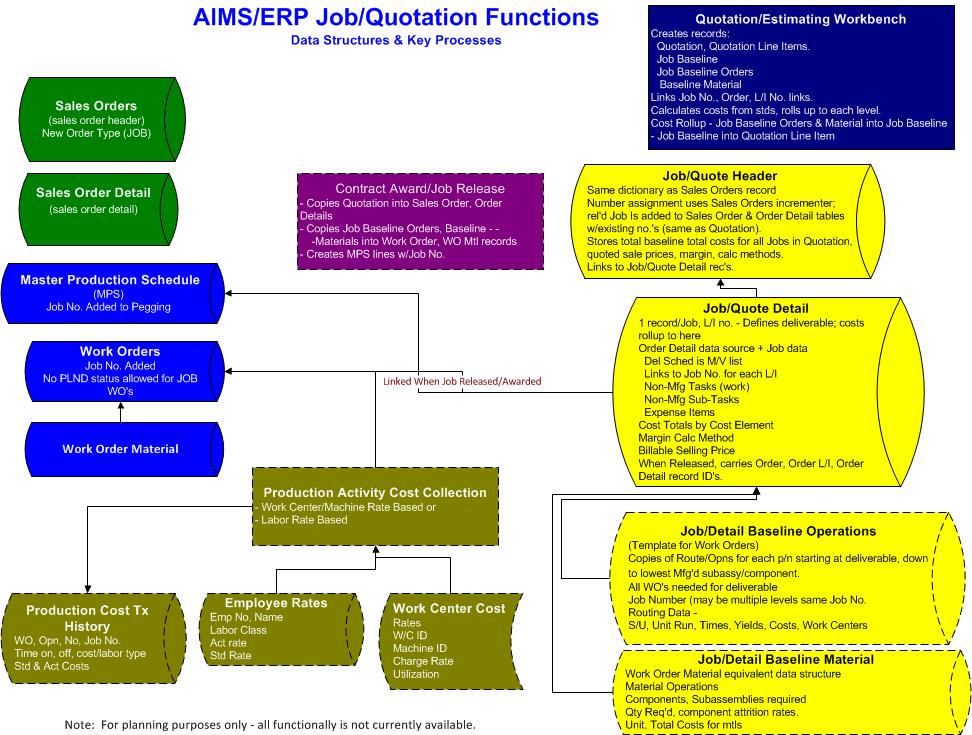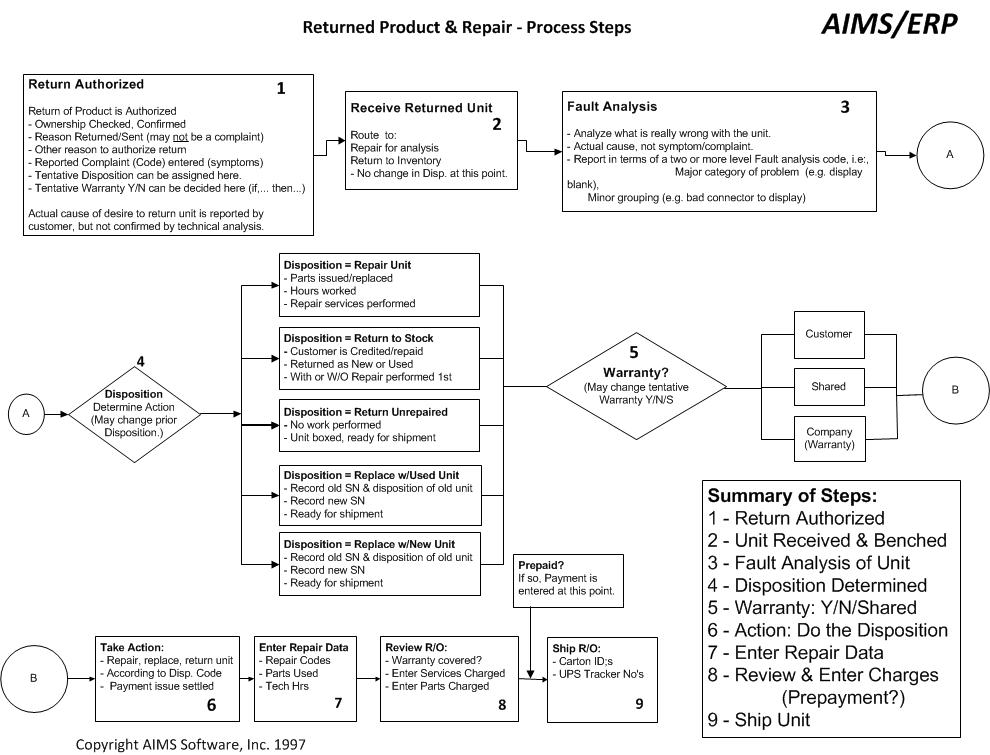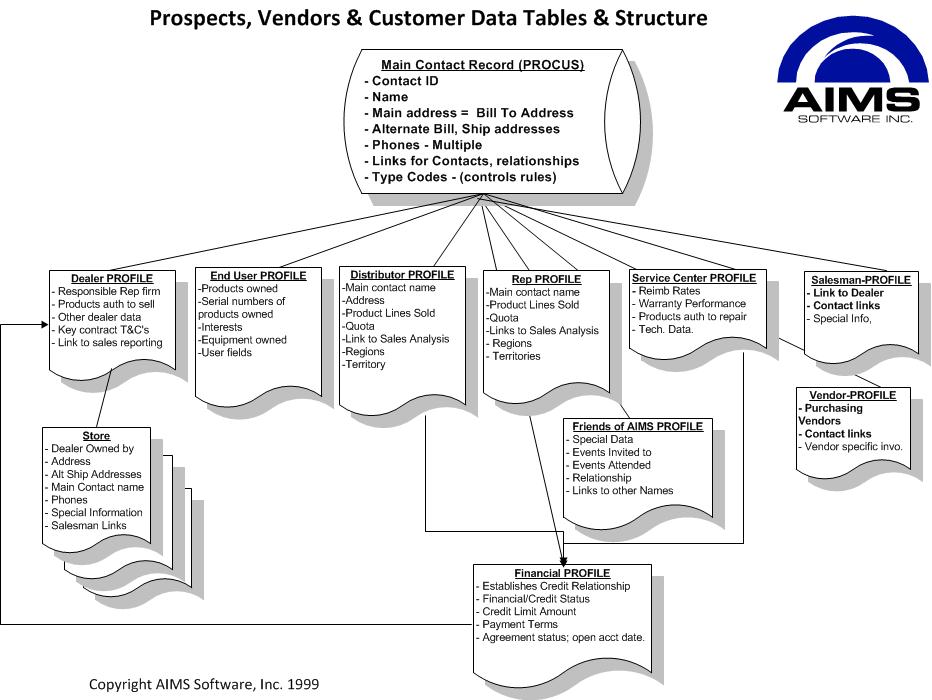 |
  Primary Product: |
|
Customers - Customer Interface Module Customer interface module - the AIMS/ERP Customer Interface Module (CIM) is a large-scale, sophisticated subsystem within the AIMS/ERP system. Key functions are summarized below, including several diagrams that describe its primary data stucture and subsystems within the overall module. Multiple distribution channels - AIMS/ERP is built from the foundation up to support a complex multiple channel sales process. each customer has one or more type codes assigned to it, which in turn provide linked access to screens containing type-specific data. Each customer type code is linked to and controls the specific products and pricing structure that can be sold through that channel. These function as mutually exclusive product catalogs, in effect, separate for each distribution channel. Thus a licensed dealer can buy product licensed for sale through that channel, at its specific price structure. Another customer type can, for example, be sold only spare parts for that channel, while another customer type can be offered only promotional products such as coffee cups and t-shirts. Project / Job Management - AIMS/ERP includes the ability to define a project / job of any complexity by linking Work Orders together to form a Work Breakdown Structure (WBS), accumulate estimated work/cost data, vendor quotations for custom parts or subcontracted work and other project-specific functions. This major functionality includes:
The diagram below provides an overview of the integrated AIMS/ERP Job/Project Management functionality.
Return / Repair system - AIMS/ERP includes a very detailed Return & Repair subsystem, all fully integrated with all other AIMS/ERP functions, such as inventory and sales orders. While it provides the serial-number robustness needed for more complex products, it can and was used for more typical "RMA" functions where the returned units/product quantity is received, examined, and dispositioned as a result of the examination/inspection. The diagram below provides an overview of this uniquely powerful function:
AIMS/ERP Prospects, Vendors & Customer Data Tables & Structure - In order to provide the complex set of functions needed by the diverse AIMS/ERP customer-facing functions, the foundation is its sophisticated contact data tables and the way they are linked. Unique to this design is the ability to quickly & easily add new types, with a new table with type-specific data fields, which are automatically linked to the primary contract record - all without code changes. This structure is illustrated in the diagram below.
Shipping - AIMS/ERP includes a complete pick/pack/ship process that can concurrently include both regular picked & staging activities, integrated with a assemble-to-order functions, and includes Shipping documents, capture of shipper tracking number data and related activities. Credit & Receivables Management - the CIM functions include a complete credit and accounts receivable module that is tightly integrated to all related functions. It handles all forms of payment, pre-payments, credit memo, application of payments to invoices, aging reports, credit limit control, transaction registers, and a family of reports. Invoices are closely linked to sales orders, including unshipped (and thus un-billable) quantities. The Return/Repair Order subsystem is also tightly integrated with the credit & receivables functions. There is als Pro Forma invoice support for international shipments & related purposes. Financial reports, such as Cost of Sales are provided to simplify month-end journal entries into an external GL system. Design Documents - These documents are avaialble that you can view/download. They describe all of the tightly integrated, customer facing functions within AIMS/ERP. Customer Interface Module - Data Tables specification - PDF at THIS Link Customer Order Shipping Specifications - PDF at THIS Link Customer Sales Maintenance Specifications - PDF at THIS Link Customer Sales Orders Specifications - PDF at THIS Link Customer Sales Procedures - PDF at THIS Link Customer Credit & Receivables Management Subsystem Specifications - PDF at THIS Link. |


